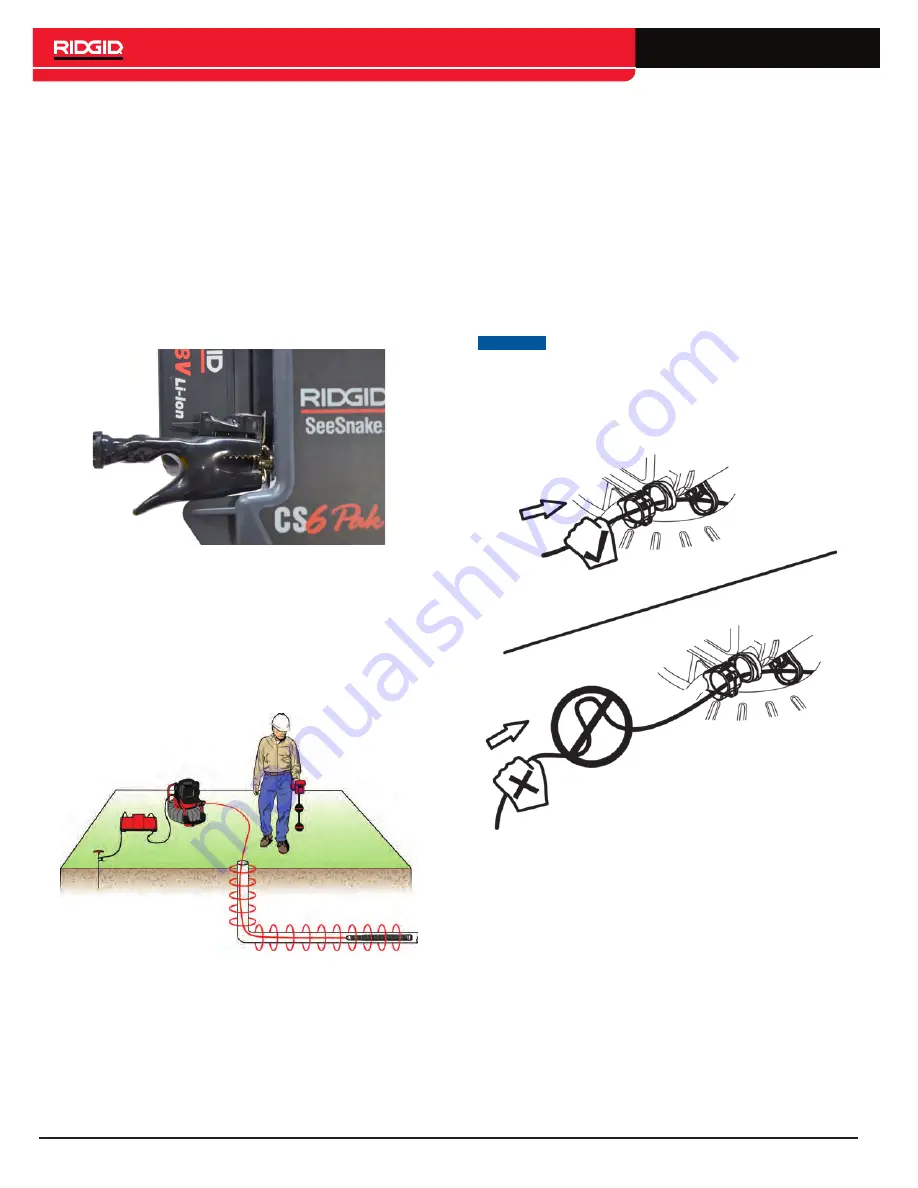
16 – English
Line Tracing the Push Cable
You can locate the path of a pipe by line tracing the push
cable. This is especially useful for inspecting non-metal-
lic or non-conductive pipes. Line trace the push cable by
using a tranceiver to induce current onto the push cable
using a transmitter.
To line trace the push cable, follow these steps:
1. Push the transmitter’s ground stake into the ground
and clip one of the transmitter’s leads to it.
2. Clip the other lead to the transmitter clip-on terminal
on the back of the monitor.
3. Power on the transmitter and set your desired fre-
quency. For best results, use frequencies 33 kHz
and higher.
4. Power on the receiver and set it to the same frequen-
cy as the transmitter.
5. Trace the line.
Note: For additional instructions on line tracing, refer to
the manual for the transmitter and receiver models you
are using.
Retrieving the Camera
After completing the inspection, pull the push cable back
out of the pipe with slow, steady force and return it to the
drum. Wipe the push cable with a paper towel or cloth as
you withdraw it. If possible, continue running water down
the pipe to clean the push cable.
To avoid damage to the camera or push cable, do not
exert excessive force during retrieval. If the camera head
is stuck behind a turn, you can pop the camera past the
turn or run water down the pipe to lubricate the push
cable.
NOTICE
Gripping close to the Compact2, always
use short strokes to feed back small
lengths of the push cable into the drum.
Pushing back longer lengths of the push
cable or forcing the push cable may
cause it to loop, kink, or break.
www.
GlobalTestSupply
.com
Find Quality Products Online at:











































